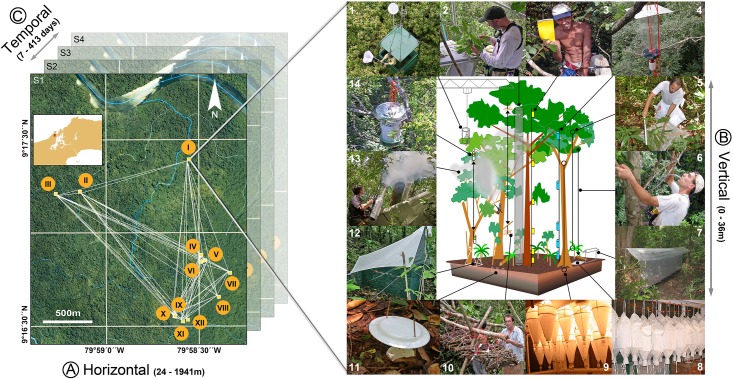Fig 1. Overview of the sampling design.
Three major spatio-temporal dimensions were considered for arthropods: spatial turnover or difference in species composition measured (A) horizontally (among sites, all less than 2km apart), (B) vertically from -5cm to 36m above ground, and (C) temporally, among sampling intervals repeated within a period of 413 days. (A) Twelve 20x20m sites (I-XII) were surveyed for plants and arthropods, from the ground to the upper canopy. (B) Arthopods were surveyed using 14 different protocols from ground to the upper canopy: (1) baits and netting; (2) gall sampling within the volumetric space of a vertical cylinder; (3) sticky traps; (4) aerial composite flight-interception traps; (5) beating of vegetation and dead branches; (6) hand collecting for ants and termites; (7) ground flight-interception traps; (8) collection of the leaf-litter fauna and extraction with a mini-Winkler apparatus; (9) collection of ground and suspended soils, extraction with Berlese-Tullgren apparatus; (10) wood rearing; (11) pitfall traps; (12) ground Malaise traps; (13) canopy fogging; (14) light traps. (C) After an initial sampling period of 6 weeks during the late wet season (September-October 2003, hereafter Survey S1), field work was replicated during three similar sampling periods targeting the dry, early wet and late wet seasons (Survey S2: February-March 2004, Survey S3: May-June 2004, Survey S4: October-November 2004). Photos by JS (1), SR (2), ML (3,5,8,9,11,13), NW (4), N. Baiben (6), C.E. Carlton (7), M. Janda & J. Patera (10), RLK (14), S. Pinzon (12).

